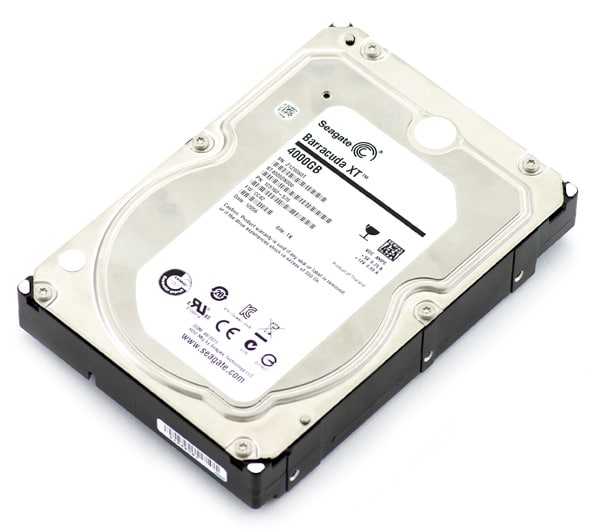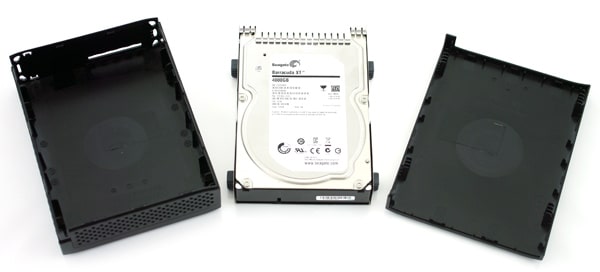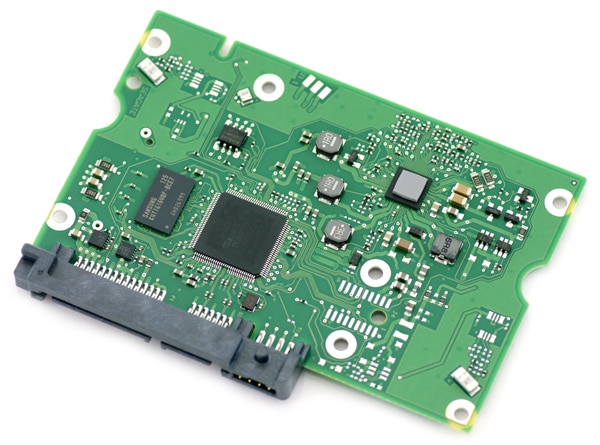
4TB hard drives are the next step up from the 3TB top capacity that the market has been used to for the last year or so. The problem is, 4TB drives haven’t quite officially hit the market yet and there’s the hard drive shortage problem, so the timing of 4TB drives coming to market is a bit uncertain to say the least. Seagate generally releases hard drive capacity bumps in their branded products first, before releasing the bare drive. That’s the process they went through when the 3TB Barracuda XT came to market and that’s the same thing they’re doing with the 4TB Barracuda XT. We recently reviewed the 4TB Go Flex Desk and couldn’t resist cracking the case open to get access to the 4TB Barracuda XT hard drive inside.

It should be said that this isn’t a final review of the 4TB Barracuda XT, the bare drive hasn’t been announced by Seagate yet and the final hardware and firmware may vary from the drive we so carefully removed from our Go Flex Desk. The 4000GB drive, as Seagate calls it on the label, doesn’t even have a fully fleshed out model number, just a simple ST4000DX000 that will change when the bare drive is released. Disclosures aside, for anyone really wanting 4TB of drive capacity today, it’s easy enough to remove the disk from the Go Flex Desk, unlocking a tremendous amount of capacity.
Taking the drive out is a tricky maneuver to say the least. The entire GoFlex Desk case is plastic, held together with clips that can easily break or a surface that can scratch easily with a careless screwdriver. To take apart the case we used a plastic pry bars which allowed us to carefully bend the cover back without scratching the delicate glossy surface. Once the entire case was unsnapped, the bare drive was easily removed from the shock-mounted tray it was secured in.
Performance
Compared to the five platter 3TB Barracuda XT we reviewed earlier this year, performance-wise this five platter 4TB model falls largely in line. The only obvious changes are the move from 600GB to 800GB platters and a doubling of cache to 128MB. Even though Seagate has confirmed 1TB platters are in production, presumably for the three platter 3TB Barracuda XT that’s months behind in its commercial release, the vaunted 1TB platters didn’t make it into this iteration of the drive.
We measured sequential file transfer speeds at 140.2 MB/s read and 133.8 MB/s write using 2MB transfers in IOMeter. Those speeds slowed to 48.3 MB/s read and 40.2 MB/s write with 2MB random transfers.
Moving to 4K random transfers, we measured speeds of 45 IOPS read 94 IOPS write or 0.176 MB/s and 0.366 MB/s respectively. These values came up shy of what we measured on the 3TB XT, although its comparing a full production model to an unannounced and otherwise unreleased drive.
Using CrystalDiskMark to measure performance of the inside versus the outside edge of the platters, we found the speed to be a bit higher than what IOMeter saw on the top end. This could be explained by IOMeter looking at a broader section of the drive, where our forced inner/outer test only looks at the outermost or innermost edges for best or worst case performance.
On the outer tracks of the 4TB Barracuda XT we found speeds measuring 188.6 MB/s read and 187.5 MB/s write. These values slowed to just 88.82 MB/s read and 88.71 MB/s write on the inner portion of the drive.
Final Thoughts
We will of course have a full review of the bare 4TB Barracuda XT when released, but our initial testing shows a tremendous amount of promise. We saw sequential speeds very close to 190 MB/s read and write, which is faster than many consumer hard drives on the market today. While not exactly setting speed records galore, it still shows there is a lot of promise in the high capacity hard drive market.


